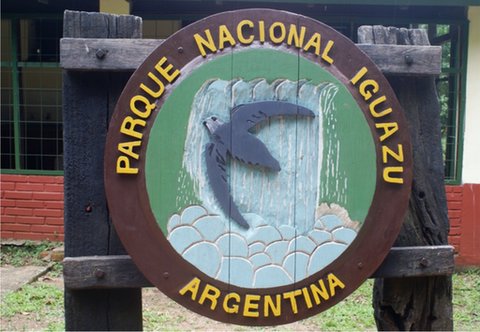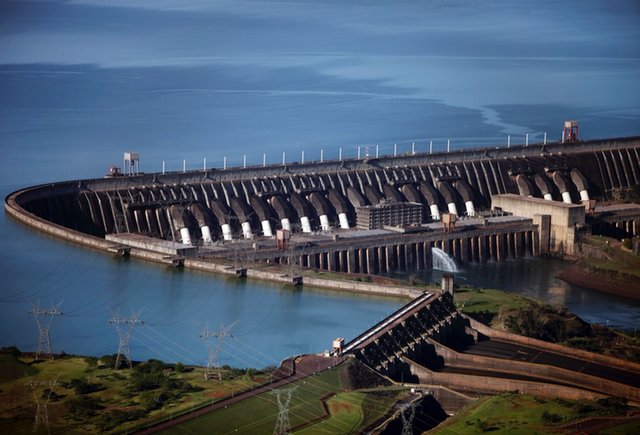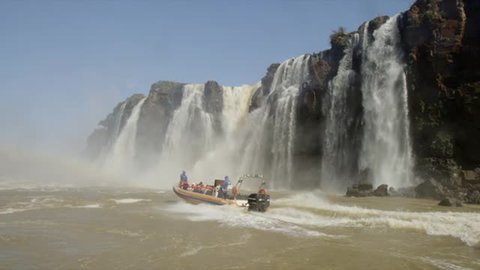PeopleandtheFalls
Peoplehavelivedinthisareaformorethan10,000years.First,theKaingang.Then,theGuaraní.In1541,aSpanishexplorerwasthefirstEuropeantoseethe falls.
Religiousmissionariesarrivedin1609.But,theSpanishforcedthemtoleavein1767.Intheearly1880s,Westerners returned.
Scientificexpeditionsledtothefirsttouristtripin1901.Today,therearetwonationalparksites.IguazúFallsisthoughtofasoneofthe“NewSevenWondersof Nature.”
InArgentina,peoplespeakSpanish. SothefallsarecalledtheIguazúFalls.In Brazil,theyspeakPortuguese.So,theycallthemtheIguaçuFalls.

Thissignsays,"IguazúNationalPark,Argentina"in Spanish.
TroubleinParadise
PeoplewanttoprotecttheIguazúregion.Yet,peopleareitsbiggestproblem.Poacherscomeintotheparksillegally.Theytaketreesandanimals.Peopleaccidentallyinjureorkillanimalswhiledrivingthroughthe parks.

TheItaipuDamontheParanáRiverisoneofthelargesthydroelectricprojectsinthe world.
TouriststakeaboattourofIguazú Falls.
Outsidetheparks,loggingandclearinglandforfarmsisaproblem.Whentreesdisappear,plantsandanimalslosetheirhomes.Somespeciesgoextinct.Watersourcesareaffected,too.Buildinghydroelectricdamssupplieselectricitytothearea.But,thedamsalsoaffectthewaterlevelinthe river.
WorkingTogether
Onechallengeinpreservingtheregionisitslocation.Thefallsarenearthebordersofthreecountries.Eachcountryhasitsownideasonhowtomanagethe land.
Still,theyhavecometogethertocreatealong-termplan.Thisincludesmorepatrols,monitoringspecies,education,and research.
Jaguarsareasignthattheplanisworking.Intheearly2000s,jaguarshadnearlydisappearedfromthisregion.Farmersusedtokilljaguarsthatkilledtheirlivestock.Nowfarmersusethelandtoplantcorn.Thenumberofjaguarshas doubled.

JaguarsaremakingacomebackintheIguazú region.
People’seffortstomaketheparksbetterareworking.Thebeautifulfallsareworthseeing.Moreimportantly,theyareworthfighting for.
Thisviewfromaboveshowspartofthespectacular falls.
